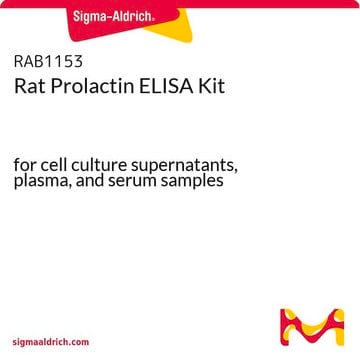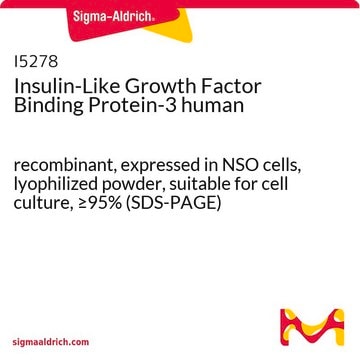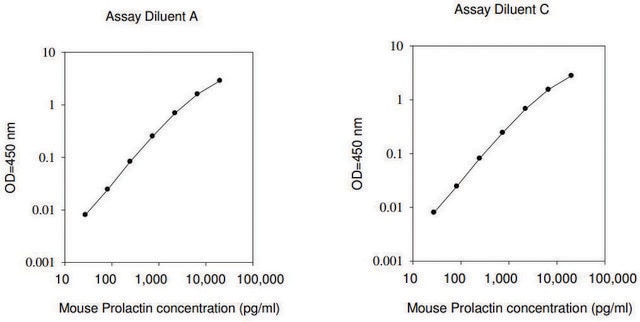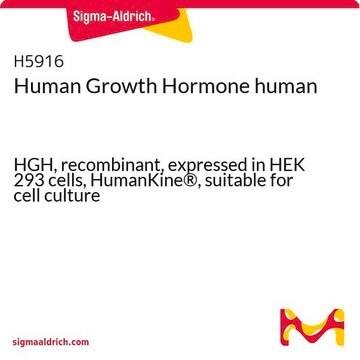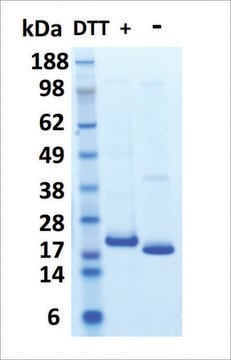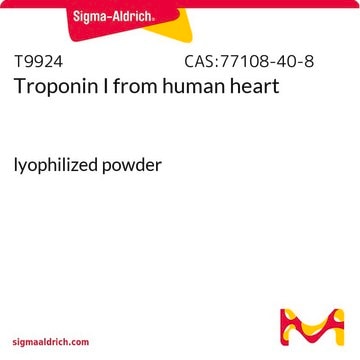SRP9000
Prolactin human
human, recombinant, expressed in HEK 293 cells
Sinónimos:
PRL
About This Item
Productos recomendados
biological source
human
Quality Level
recombinant
expressed in HEK 293 cells
sterility
non-sterile
assay
≥95% (SDS-PAGE)
form
liquid
potency
≤2 ng/mL Nb2-11 cells proliferation EC50
shelf life
2 yr
mol wt
23 kDa
technique(s)
cell culture | mammalian: suitable
impurities
≤1 EU/μg protein Endotoxin level
storage temp.
−20°C
Gene Information
human ... prl(5617)
General description
Prolactin (PRL) is a multifunctional polypeptide hormone primarily produced by the lactotrophic cells of the anterior pituitary gland in vertebrates.
Application
- in in vitro experiments to examine its effects in sleep-like concentrations on T-cell migration
- to study its effects on claudin 2 (CLDN2) expression in the Caco-2 intestinal epithelial cell model
- in microplate assays to demonstrate the specificity of the antibodies for vasoinhibin
Biochem/physiol Actions
Physical form
Preparation Note
signalword
Danger
hcodes
pcodes
Hazard Classifications
Repr. 1B
Storage Class
6.1C - Combustible acute toxic Cat.3 / toxic compounds or compounds which causing chronic effects
wgk_germany
WGK 3
flash_point_f
Not applicable
flash_point_c
Not applicable
Certificados de análisis (COA)
Busque Certificados de análisis (COA) introduciendo el número de lote del producto. Los números de lote se encuentran en la etiqueta del producto después de las palabras «Lot» o «Batch»
¿Ya tiene este producto?
Encuentre la documentación para los productos que ha comprado recientemente en la Biblioteca de documentos.
Nuestro equipo de científicos tiene experiencia en todas las áreas de investigación: Ciencias de la vida, Ciencia de los materiales, Síntesis química, Cromatografía, Analítica y muchas otras.
Póngase en contacto con el Servicio técnico
